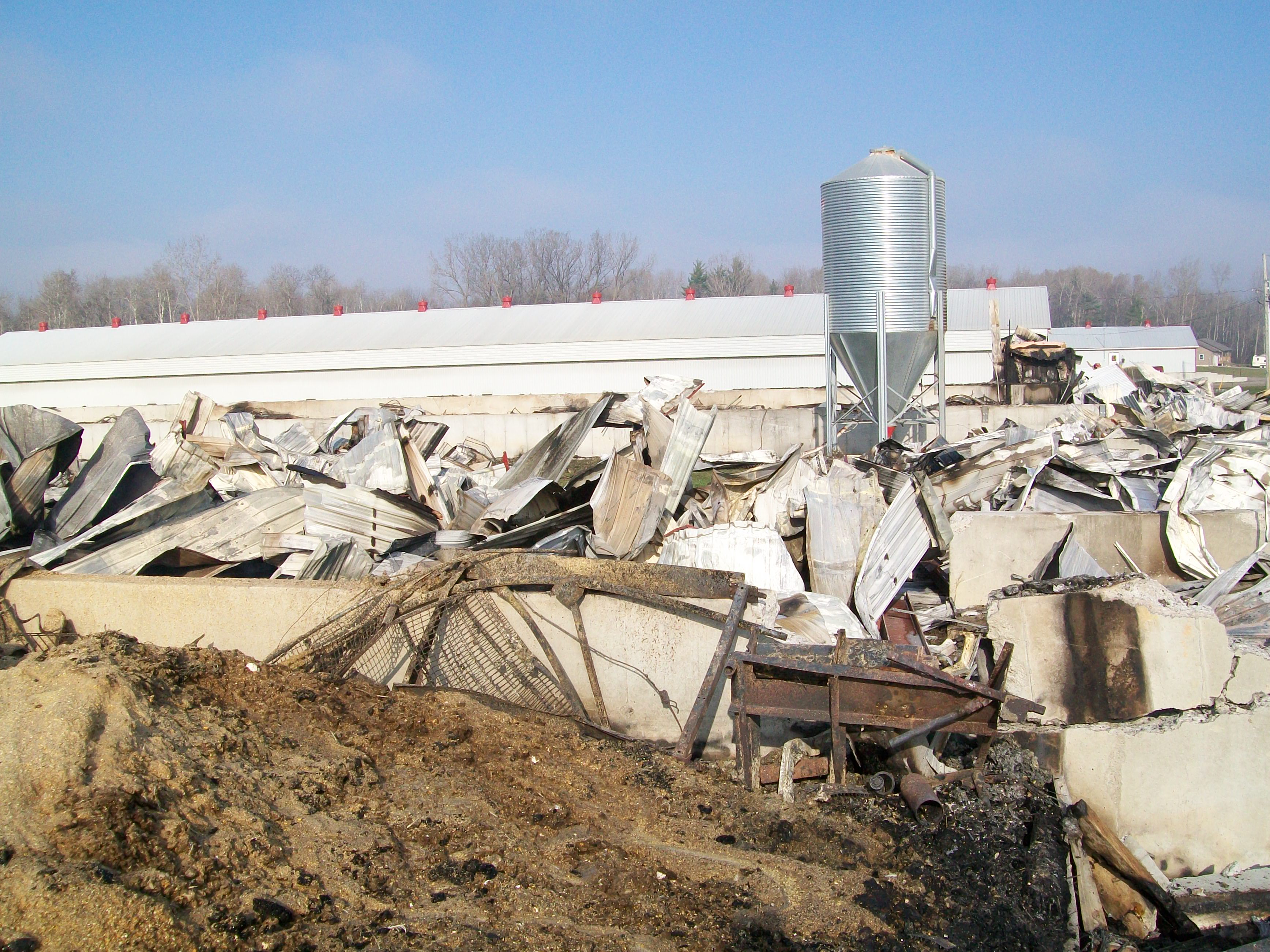Emergency disposal of on-farm deadstock
Learn how to dispose of deadstock during emergency situations according to the Nutrient Management Act, 2002. This technical information is for Ontario livestock and poultry producers.
ISSN 1198-712X, Published October 2023
Introduction
When disposing of any dead farm animal (deadstock), the farm operator must comply with O. Reg. 106/09, of the Nutrient Management Act, 2002. Options for the disposal of on-farm deadstock include:
- burial
- composting
- use of disposal vessels
- incineration
- anaerobic digestion
- pick up by a collector licensed under the Food Safety and Quality Act (FSQA)
- transport to a common bin
- transport to a waste disposal site approved under the Environmental Protection Act, 1990 (EPA), such as a landfill
- transport to a disposal facility licensed under the FSQA
Farmers may lose large numbers of livestock and poultry unexpectedly, due to fire, natural disaster, system or structural failures, or a disease outbreak. In situations where farmers cannot comply with O. Reg. 106/09, the Ministry of Agriculture, Food and Rural Affairs (OMAFRA) may authorize disposal or management of deadstock that would not normally be permitted.
This fact sheet discusses the process and the factors affecting eligibility for an authorization.
Emergency events
Occasionally, producers lose herds or flocks to unexpected threats, which may include:
- barn fires
- natural disasters
- system failures (ventilation)
- disease
- heat stress
- structural failure (barn collapse)
When such an event occurs, matters such as the health and welfare of the remaining animals and worker safety must first be attended to, but proper management and disposal of the deadstock are also vital.
Under the regulation, when emergency conditions exist that make it difficult to dispose of deadstock as specified in the regulation, farm operators may apply in writing to OMAFRA. The farm operator will request authorization for an alternate or modified method of storage, disposal or management.
Qualifying for an authorization
OMAFRA bases its decision on the following:
Urgency
- What emergency conditions exist?
- How long will they continue?
- How much deadstock is involved?
- What is their approximate age and weight?
For instance, poultry carcasses will rapidly decompose in the heat and humidity of summer. Rapid disposal is necessary.
Inability to compost
- What is the condition of the deadstock?
- Are they mixed with any other material?
Emergencies such as structural collapse or barn fires (Figure 1) may result in deadstock being mixed with debris. The process of sorting all of the material to remove debris may make it impractical or unfeasible to consider composting. The deadstock may also be in a state that is not acceptable for collectors if the carcasses are severely burned.
Each case is different and must be evaluated on its own merits.

Transportation problems
- What storage, transport or disposal options have been considered?
- Why have they been rejected?
- What conditions exist that make it difficult to comply with the regulation?
Understand the available storage, transport or disposal options fully before rejecting them. Options may not be feasible or permitted, due to weather conditions, geography and availability of resources.
Alternate disposal method
- What method of disposal is being proposed?
- How does it vary from the standards in the regulation?
- What actions will be taken to ensure that the risk of environmental contamination is prevented or minimized from the storage, management or disposal methods being proposed? These may include monitoring of the disposal site or severing tile drainage in the area, increased separation distances to sensitive receivers such as surface water and wells. OMAFRA cannot grant an authorization that could result in an adverse effect to the environment.
Other details
- Are there other agencies involved in the emergency such as the Canadian Food Inspection Agency?
- Have they given any instructions for the disposal of the existing deadstock and any future mortalities that may result due to this emergency?
- Are there other circumstances or facts that OMAFRA should be aware of?
In accordance with the regulation, OMAFRA must consider many factors in addition to the information that is provided in order to decide whether to grant the emergency disposal authorization. The decision of the Ministry is final.
If OMAFRA chooses to issue an authorization, it may include whatever conditions are considered advisable to protect public interest. If granted an authorization, the farm operator must provide OMAFRA with satisfactory evidence, within 30 days of the authorization being granted, that the deadstock was disposed of in accordance with the authorization.
How to apply
To apply for an Emergency Authorization for disposal of deadstock, contact:
- during normal business hours:
Agricultural Information Contact Centre,1-877-424-1300 - during off-hours or non-business days:
Spills Action Centre, at1-800-268-6060
Request an Emergency Authorization form. Staff from OMAFA or the Ministry of the Environment, Conservation and Parks (MECP) will return your call the next business day.
Additional information on the requirements of specific disposal methods is available from deadstock management of farm animals in Ontario.
Disclaimer
The information in this document is provided for informational purposes only and should not be relied upon to determine legal obligations. To determine your legal obligations, consult the relevant law. If legal advice is required, consult a lawyer. In the event of a conflict between the information in this fact sheet and any applicable law, the law prevails.
This fact sheet updated by Dan Ward, P. Eng., poultry and other livestock housing and equipment, OMAFRA. It was originally written by Jacqui Laporte, environmental management specialist, OMAFRA and reviewed by Paul Sims, divisional program specialist, MECP.